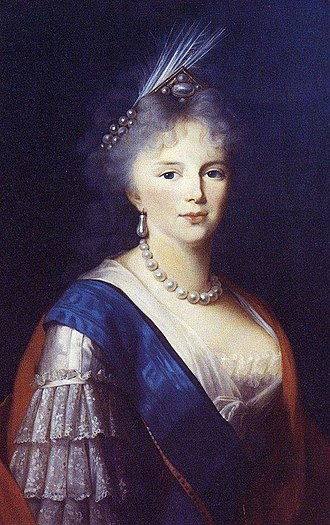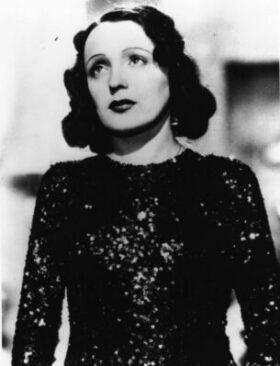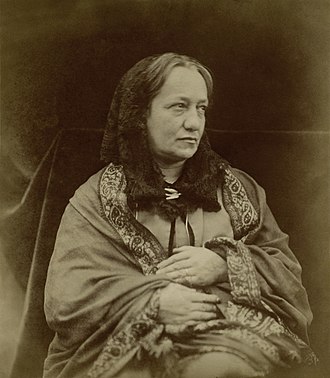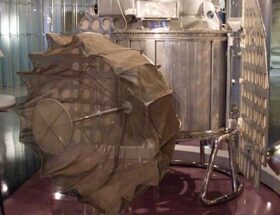
Early Life
Sophie Marie Dorothea Auguste Luise was born on 25 October 1759 in Stettin, Kingdom of Prussia (now Poland). She was the eldest daughter of the eight children born from Frederick II Eugene, Duke of Württemberg, and Princess Friederike of Brandenburg-Schwedt, niece of King Frederick II of Prussia.
In 1769 her family took up residence in the ancestral castle at Montbéliard, then an exclave of the Duchy of Württemberg.Montbéliard not only was the seat of the junior branch of the House of Württemberg, but a cultural center frequented by many intellectual and political figures.
Sophia Dorothea’s education was better than average to the point that she cultivated her skills with great enthusiasm. By the age of 16 she was well-versed in mathematics and architecture, as well as fluent in German, French, Italian and Latin.
She was brought up according to French etiquette as custom of that era, but with German bourgeois simplicity. She was known to be thoughtful, organized, strong-willed, constant, and tender.
In 1773 Sophie Dorothea was among the group of German princesses considered as possible wives of the heir to the Russian throne, the future Tsar Paul I. However Sophie wasn’t yet 14 years old at the time and thus Wilhelmina Louisa of Hesse-Darmstadt, a princess of a more appropriate age, was chosen instead.
At the age of 16, Sophia Dorothea became tall, buxom and rosy-cheeked with a sunny disposition, although extremely shortsighted and inclined to be stout.
She was then engaged to Prince Louis of Hesse, the brother of Tsarevich’s wife.
Grand Duchess of Russia
After the Tsarevich became a widower in 1776 Frederick II of Prussia proposed his grandniece as the ideal candidate to be Paul’s second wife. Russian Empress, Catherine II, was delighted with the idea as the Princess of Württemberg shared with her not only a similar education, but also the same original name and place of birth.
When her mother lamented the unfortunate destiny of some Russian sovereigns, a pleased Sophia Dorothea replied that her only concern was to make her way in her new country quickly and successfully. Her former fiancé received a monetary compensation when the engagement was broken.
Sophie and Paul met for the first time at a state dinner given in honor of his arrival in Berlin. Having learned that her fiancé’s tastes were serious, she spoke about geometry during their first encounter.
The next day, she wrote a glowing letter to a friend in which she declared that “I am more than content. The Grand Duke could not be more kind. I pride myself on the fact that my dear bridegroom loves me a great deal, and this makes me very, very fortunate.”
Paul was as happy with the young princess as she was with him and wrote to his mother that: “I found my intended to be such as I could have dreamed of. She is shapely, intelligent, quick-witted, and not at all shy.”
By early fall, Sophia fell in love with her future husband. “I cannot go to bed, my dear and adored Prince, without telling you once again that I love and adore you madly,” she wrote to Paul.
Soon after arriving at St Petersburg, she converted to the Russian Orthodox Church, took the name “Maria Feodorovna,” and was granted the title Grand Duchess of Russia (with the style Imperial Highness). The wedding took place on 26 September 1776.
Despite Paul’s difficult and often tyrannical character, Maria Feodorovna never changed her feelings. Her even temper and patience were instrumental in knowing how to deal with a difficult husband and moderate the extreme elements in his character. She wrote to a friend: “My dear husband is a perfect angel and I love him to distraction.”
As Grand Duchess Maria Feodorovna possessed such parsimony that she was prepared to spend the whole day in full dress without fatigue and implacably imposed the same burden on her entourage. She didn’t hesitate to take over the clothes of her husband’s first wife and dispute with her ladies-in-waiting the defunct Natalia’s slippers.
At the beginning Catherine II was enchanted with her daughter-in-law, about whom she wrote to a friend: “I confess to you that I am infatuated with this charming Princess, but literally infatuated. She is precisely what one would have wished: the figure of a nymph, a lily and rose complexion, the loveliest skin in the world, tall and well built; she is grateful; sweetness, kindnesses and innocence are reflected in her face.”
However, the relationship between the two women quickly turned sour: Maria Feodorovna sided with her neglected husband in the family’s acrimony and despite her good intentions to ease the difficult situation, meddling only aggravated their differences.
In December 1777 she gave birth to the first of her ten children, the future Tsar Alexander I. Just three months later, Catherine II took the newborn to raise him without interference from the parents.
When a second son was born in April 1779, she did the same thing. This caused bitter animosity with Maria, who was only allowed weekly visits with Paul.
For the next four years the couple didn’t have any more children. Deprived of her sons, Maria occupied herself by decorating Pavlovsk Palace, Catherine’s gift to celebrate the birth of her first grandson.
Tired of being excluded in political affairs, Paul and Maria asked Catherine II for permission to travel abroad to Western Europe. In September 1781, under the pseudonyms of “the Count and Countess Severny”, the Tsarevich and his wife set off on a journey that lasted fourteen months and took them to Poland, Austria, Italy, France, Belgium, the Netherlands and Germany.
Paris made a special impression on the couple, who visited King Louis XVI and Queen Marie Antoinette. While Louis got along well with Paul, Marie Antoinette felt intimidated and nervous when she met Maria, a known intellectual who exhibited confidence.
The conversation would turn lively later and the Queen gave the Grand Duchess a toilette set with the Wurttemberg arms printed on it. In Austria, Holy Roman Emperor Joseph II compared Maria with her husband and found her superior.
During their visit to Italy the couple proved to be much in love since Paul couldn’t stop giving kisses in public to his wife, surprising their travelling companions. On their way back to St. Petersburg, Maria went to Württemberg to visit her parents.
At the end of 1782 the couple returned to Russia and devoted their attention to Pavlovsk Palace, where Maria gave birth to Alexandra Pavlovna, the first of six daughters she would bear during the next twelve years.
To celebrate Alexandra’s birth, Catherine II gave them the Palace of Gatchina, which would occupy their attention until they were called to the throne. Catherine let the parents raise their daughters and younger sons.
During the long years of Catherine’s reign, Maria and Paul were forced to live in isolation in Gatchina with a tight income. Unlike the Romanovs, Maria was frugal, a rare virtue in a princess of that time. She continued to beautify Pavlovsk, dedicated herself to charitable work among its inhabitants, planned theatrical events for her husband and particaped in musical evenings for family and friends in which she adeptly played the harpsichord.
She was devoted to expanding her modest literary salon, which was frequented by poet Vasily Zhukovsky, fabulist Ivan Krylov, and historian Nikolai Karamzin.
Maria prided herself in being more clever than her mother-in-law and never lost the opportunity of contrasting her impeccable virtue with the failings of the reigning Empress.
She kept voluminous diaries that recorded her life in detail, but her son Nicholas I burned all these volumes after her death according to her last wishes. Even most of the letters she wrote haven’t survived since she usually requested that they be burnt.
The relationship between Paul and Catherine Nelidova, one of Maria‘s ladies-in-waiting, was the cause of the first crack in their marriage during those years. The intense liaison was particularly painful for Maria, as the other woman had been her friend.
Although Paul said that his relations with Nelidova were only platonic, Maria‘s own relationship with Nelidova became very bitter for several years. She eventually did join forces with her former friend in an attempt to moderate her husband’s increasingly neurotic temperament.
Empress of Russia
After twenty years of living in the shadows, the death of Catherine II in 1796 allowed Maria Feodorovna to have a prominent role as Empress consort.
Her influence over her husband was great and beneficial in general. Even so, it is possible that she abused it in order to help her friends or hurt her enemies.
Although the imperial couple wasn’t as close as they once had been, there remained a good deal of warmth between them. Their relationship suffered further in the last years of Paul’s life.
After Maria gave birth to her tenth and last child in 1798, Paul became infatuated with 19-year-old Anna Lopukhina and lied to his wife about the relationship being of a paternal nature.
Paul was Emperor for four years before he was murdered on 12 March 1801.
On the night of her husband’s assassination, Maria Feodorovna thought to imitate the example of her mother-in-law and tried to claim the throne on the grounds that she had been crowned with Paul.
It took her son Alexander several days to persuade her to relinquish her reckless claim, for which she had no party to support her. The strained relationship between mother and son improved though and thanks to the new Tsar, 42-years-old Maria Feodorovna kept the highest female position at court and often took the emperor’s arm in public ceremonies, while Empress Elisabeth had to walk behind.
This custom of precedence of the Dowager Empress over the reigning monarch’s wife was introduced by Maria and was unique to the Russian court, though it caused resentment with her eldest daughter-in-law.
Charity Work
In May 1797 Paul asked Maria Feodorovna to oversee the national charities. She encouraged a thorough inspection of prospective foster parents and limited admissions “from the street”, measures which decreased the inflow of new orphans and considerably reduced mortality.
Even after her husband’s death Maria Feodorovna continued to manage all the empire’s charitable establishments and control the bank for loans. By 1828, their total assets exceeded 359 million roubles, the largest capital assets in all of Moscow.
After the end of the Napoleonic wars the Board of Trustees capitalized on the recent disaster by building cheap rental housing on its properties. As a result of this policy, the new facilities housed up to 8,000 residents of all ranks in the 1820s.These institutions existed until the Russian Revolution of 1917.
Maria Feodorovna realized the need to downsize the institution, separating children from older tenants and improving the educational program for the former. She transferred the younger inhabitants to new, independent orphanages.
The Moscow Crafts College was established as an orphanage for teenagers in 1830 and continues today as the Bauman Moscow State Technical University. In the Orphanage, there were high-level educational programs along the lines of the “Latin classes for boys and the “midwife classes for girls”.
After meeting a deaf boy Maria established the first Russian school for the deaf in 1807 and supported the career of the blind musician Charlotta Seuerling, whose mother she saved from ruin.
Shortly before Empress Maria‘s death, the Orphanage took the ablest children from the streets and prepared them for professional careers. Among the teachers were Sergey Solovyov, Alexander Vostokov, Vasily Klyuchevsky, Nicholas Benois, and Vasily Vereshchagin.
Foreign Affairs
Maria Feodorovna enjoyed a considerable income which made possible for her to live in grand style. Her elegant receptions, where she appeared sumptuously dressed and was surrounded by chamberlains, were in sharp contrast with the simple court life of Alexander I, whose retiring ways and the withdrawn personality of his wife were no match for the Dowager Empress’ old splendor in the style of the time of Catherine the Great.
Her exalted position made her palace at Pavlovsk a mandatory place to visit for the great personages of St. Petersburg. She used her position to help as much as possible her numerous poor relations, some of whom were invited to Russia. Examples include her brother, Prince Alexander of Württemberg.
Maria Feodorovna transformed her court into the center of anti-Napoleon sentiment during the Napoleonic Wars and vehemently opposed any approach her son made to get to an agreement with Napoleon Bonaparte.
When the French Emperor offered to marry her youngest daughter Anna Pavlovna, Maria strongly opposed the proposed marriage.
Death
In 1822 Maria Feodorovna died in Pavlovsk, Saint Petersburg, on 5 November 1828, at the age of 69. Her memory was revered by her children, who named their eldest daughters in her honour except for Grand Duchess Alexandra Pavlovna.
Later Russian tsarinas looked up to her and used her as a role model. Pavlovsk Palace, in which Maria lived for many years and on which she left a major imprint, was maintained for her descendants as she left it in accordance with her instructions, first by her younger son Michael and later by the Konstantinovich branch of the family who inherited and kept it until the Russian Revolution.


